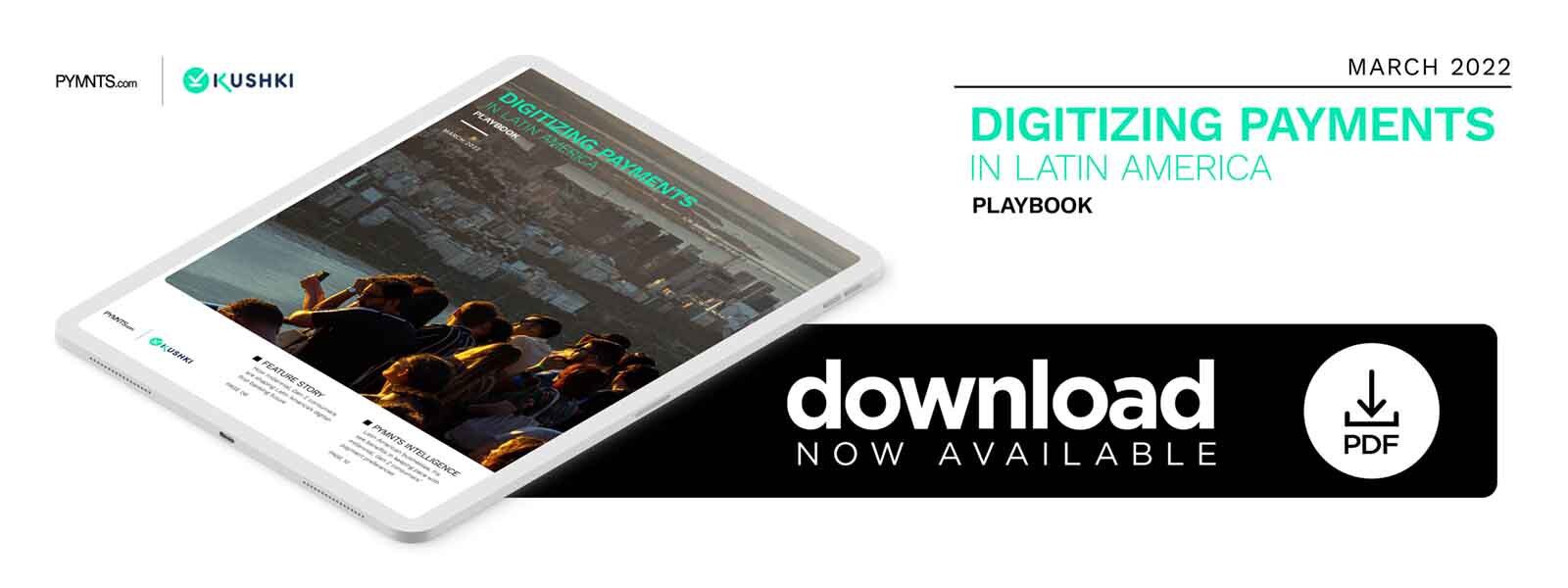PYMNTS Intelligence: How Merchants Are Meeting Latin American Millennial, Generation Z Consumers’ Payment Preferences

Consumers worldwide continue to adjust how they shop, pay for daily purchases and interact with their financial institutions (FIs) during the pandemic.
Ninety-three percent of consumers globally report being interested in tapping at least one emerging payment method to meet their financial needs, for example. Shifts in how individuals conduct routine transactions or financial tasks have been especially noteworthy within the Latin American region, where online or digital-first payment solutions have begun replacing cash payments for a more significant share of shoppers.
One December study found that nearly 35% of in-store transactions within the Caribbean and North America were made via contactless payment methods, indicating growing comfort with digital payment tools across the region.
Latin American millennials and Generation Z consumers appear to have embraced this trend to the greatest degree, flocking to emerging payment tools that connect easily and effortlessly with their digital devices.
A growing number of younger consumers are using digital wallets, for example, with 46% of Brazilian millennials and 37% of Gen Z consumers in Brazil saying they currently use this method to make payments.
Interest in online payment tools, such as virtual currencies, also is climbing, with 79% of millennials in Latin America and the Caribbean reporting an interest in learning more about cryptocurrencies. The same study found that 76% of millennials would use digital currencies once they better understood their benefits.
Financial players who wish to launch new services and remain competitive in the region’s digital banking space must heed millennial and Gen Z consumers’ payment preferences, wants and expectations. This month, PYMNTS examines how Latin American millennials and Gen Z consumers are shopping and paying within the region, how such behaviors have shifted due to the pandemic and why examining these demographics’ changing needs could prove crucial for banks and businesses wishing to retain their trust and loyalty.
How Millennial and Gen Z Payment Preferences Drive Change
Monitoring how millennials and Gen Z consumers interact with their favored brands or shop and pay for goods and services is vital for organizations across the globe as these demographics capture more and more retail spending power.
One November report found that U.S. Gen Z consumers alone now boast a collective $150 billion in potential buying power, for example. Nearly 56% of this generation identify as “social buyers” who head online to eCommerce or social media platforms to find and purchase products. Both millennials and Gen Z customers tend to be less wary of emerging digital tools. Many are willing to tie their bank accounts to digital wallets, retailers’ sites or online bill payment platforms to pay recurring bills with greater ease, for example. Such behaviors have become more popular since the global health crisis began, as consumers began using digital payment and purchasing methods at home to follow public health and safety guidelines.
While many Latin Americans remain unbanked or underbanked, access to financial solutions has spread rapidly within the market in the past several years. One report found that 88% of millennial and Gen Z consumers in the region now have access to at least one type of FI, such as a legacy institution or digital-only challenger.
Neobanks also are making significant inroads in siphoning consumer loyalty from legacy FIs. In Brazil, there are now more neobank customers than those banking with traditional FIs. The same report found that 54% of Brazilian millennials and Gen Z consumers use neobanks as their primary financial provider, compared to the 46% who said the same of legacy FIs.
The growing availability and use of digital-first or digital-only financial products offered by challengers and FinTechs led to new payment behaviors among younger Latin American consumers. More use plastic credit and debit cards or contactless solutions such as QR codes and mobile wallets to shop. On the other hand, cash use is declining among these generations, with fewer than half of Latin American Gen Z consumers using it for their in-store purchases.
It is imperative for both legacy FIs and FinTechs to support emerging, digital-first payment tools to earn and retain younger consumers’ loyalty. Paying close attention to how millennial and Gen Z payment preferences shift also could shine a light on how the Latin American banking space will grow and change in the next few years, granting payment players who are keeping tabs a critical competitive advantage.

